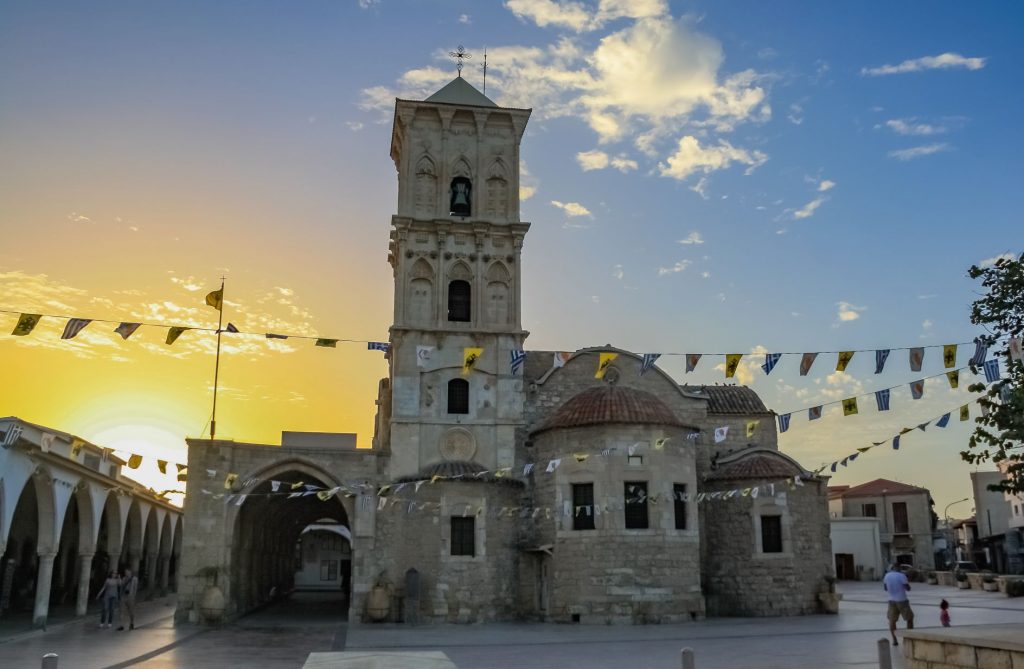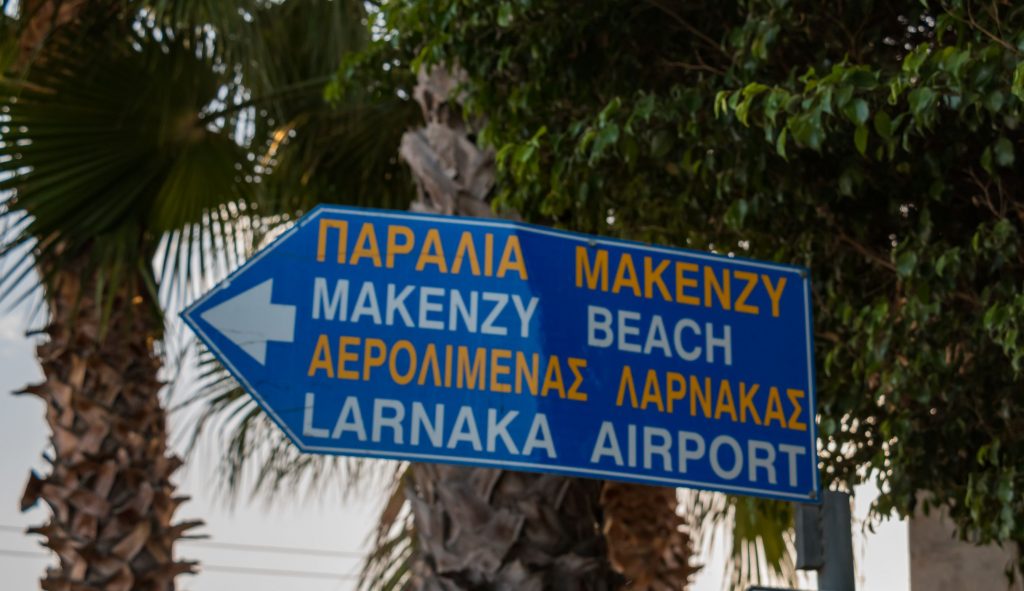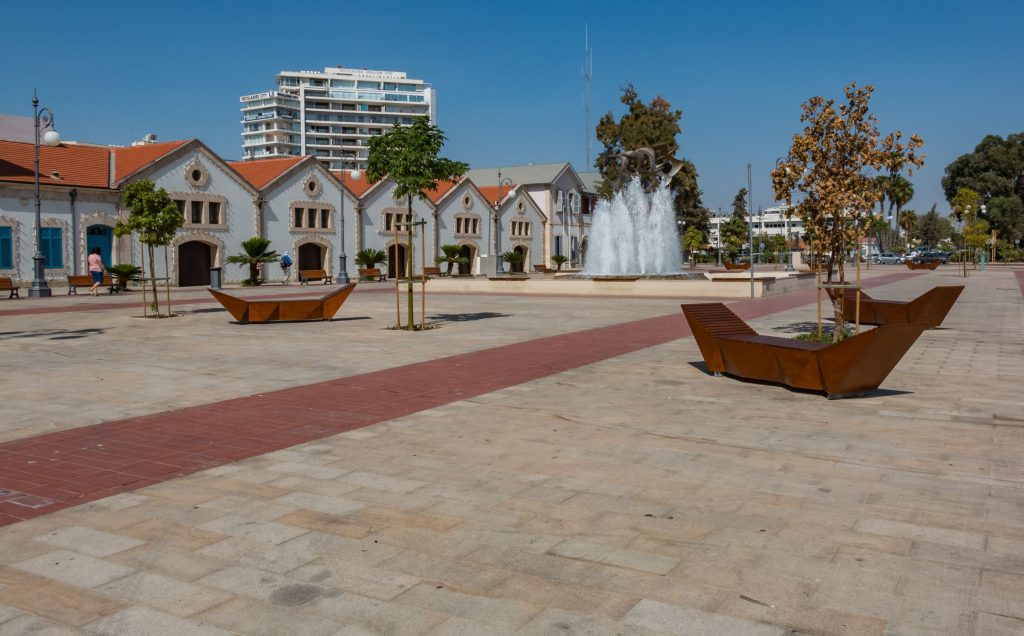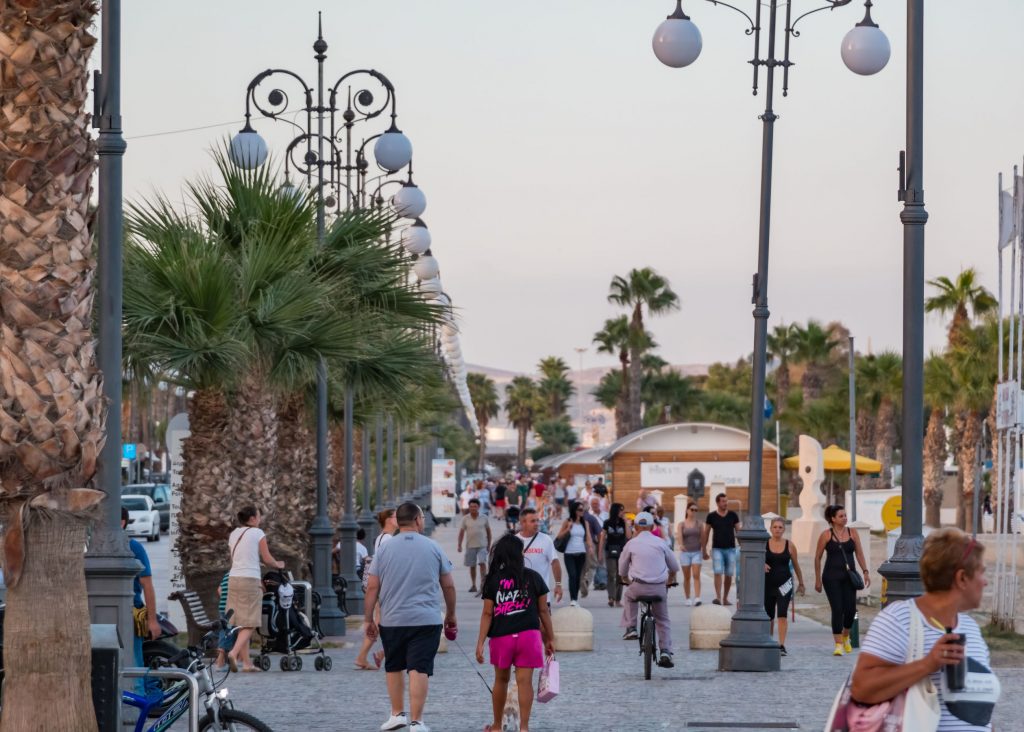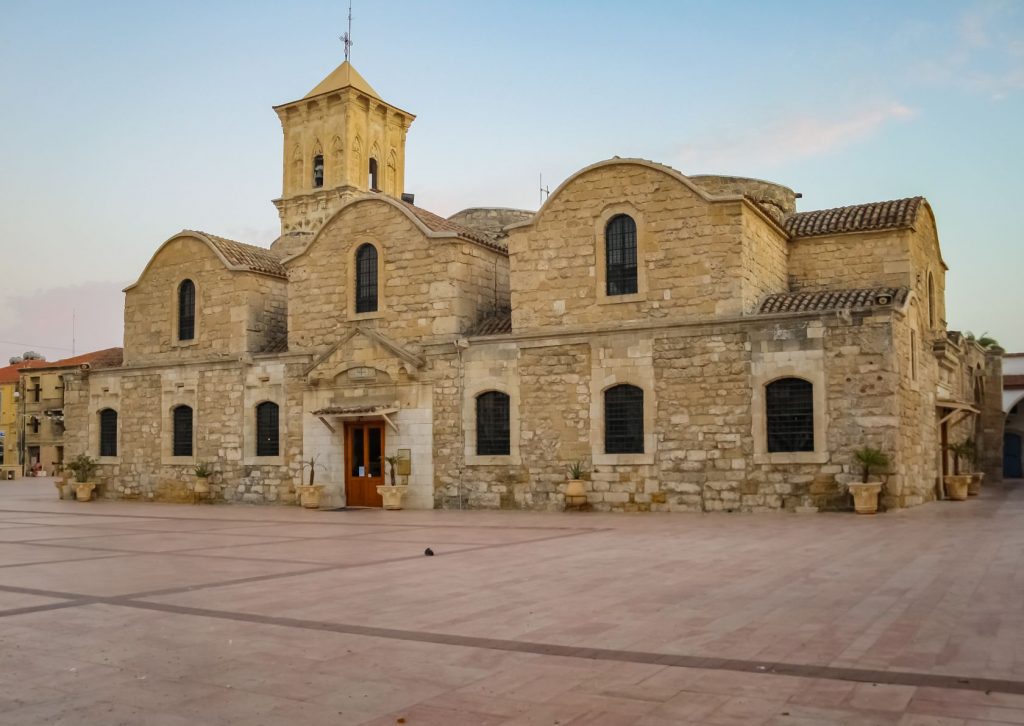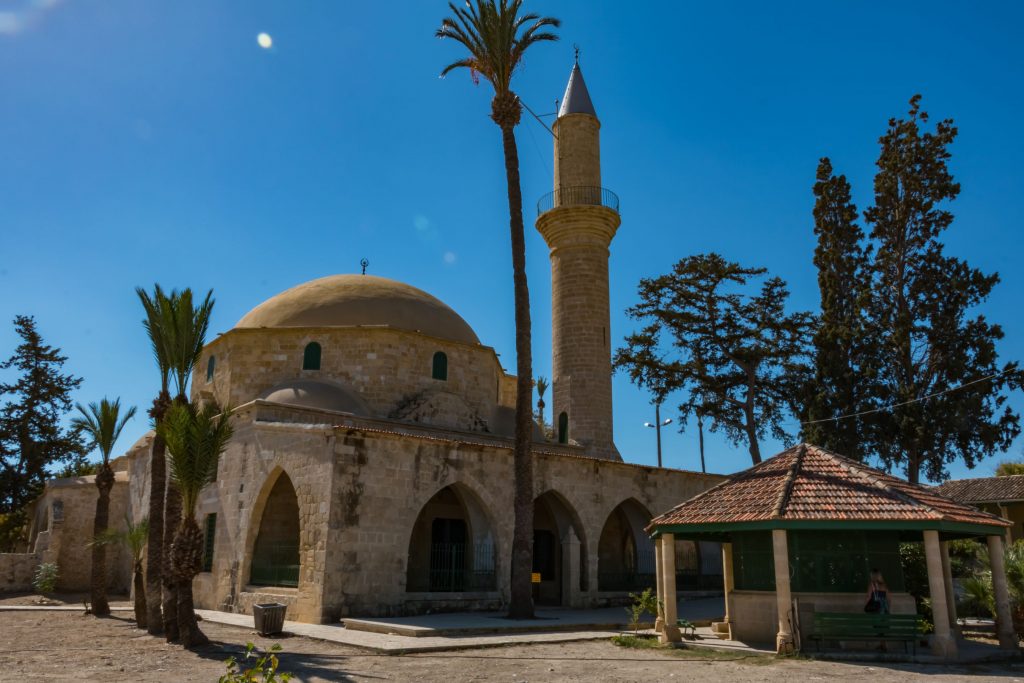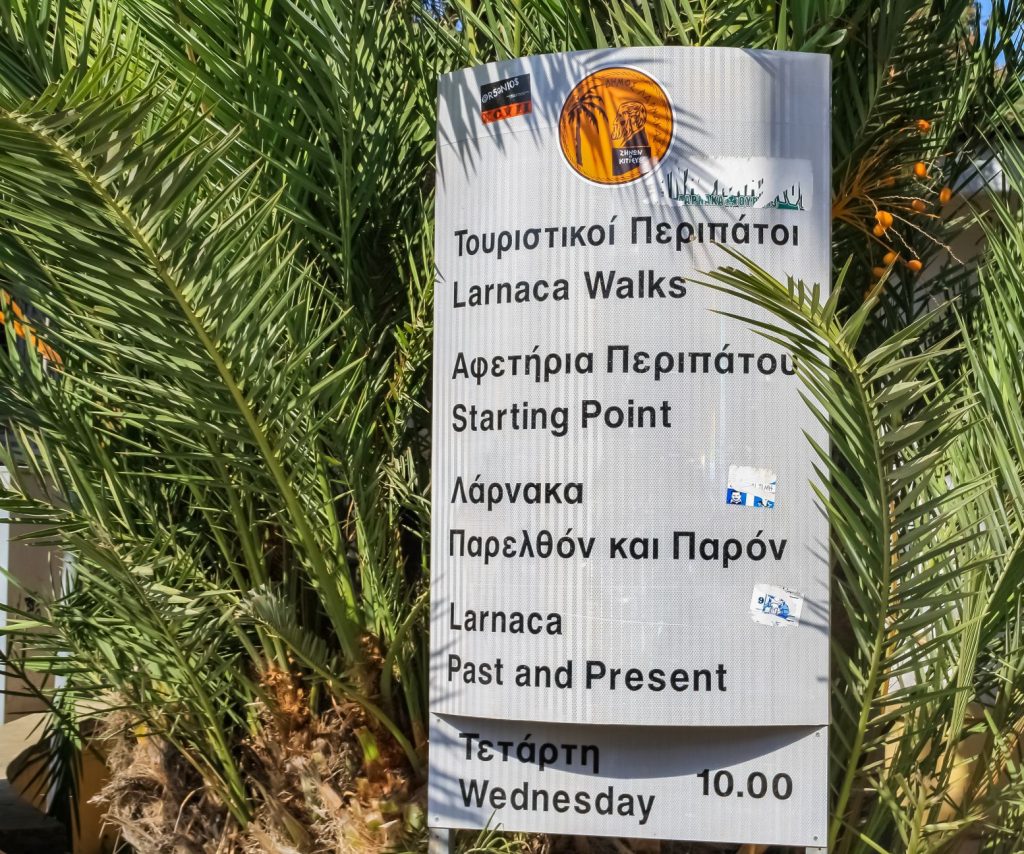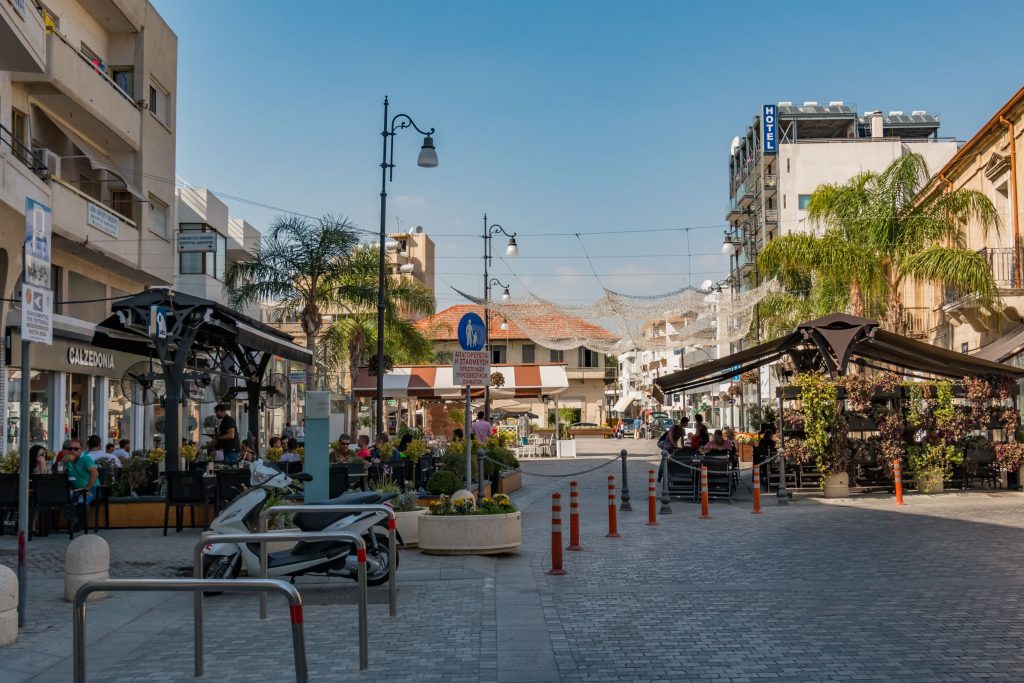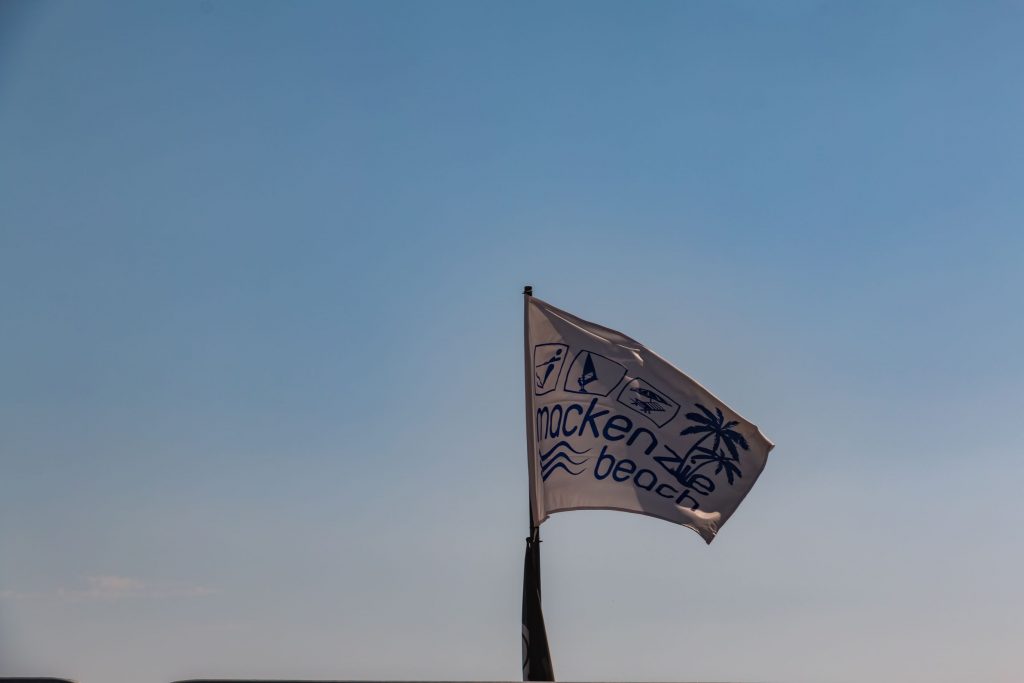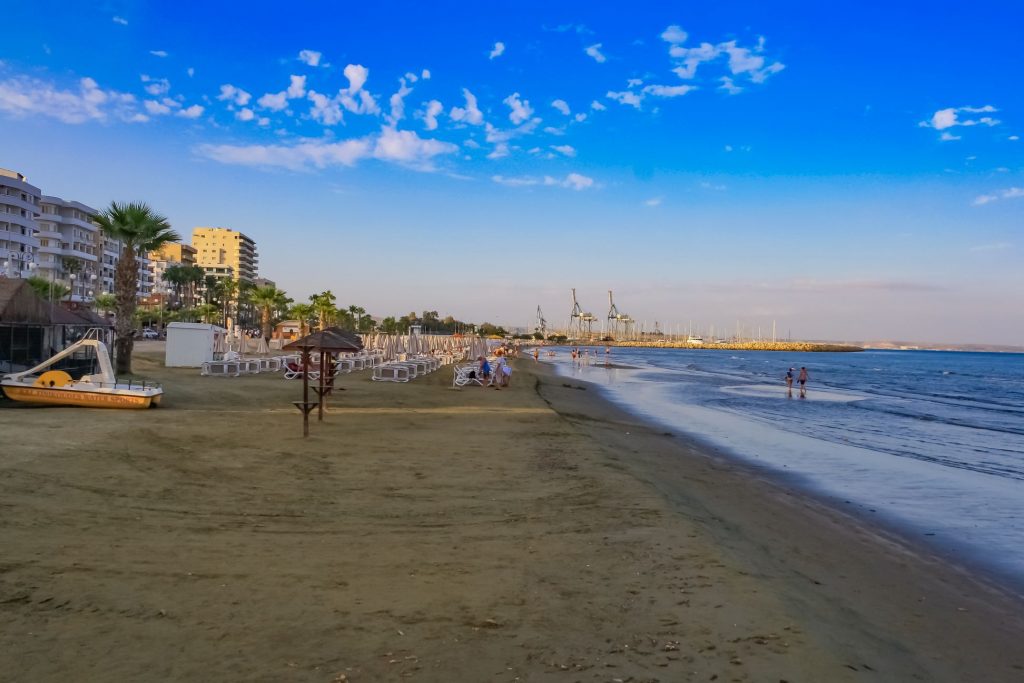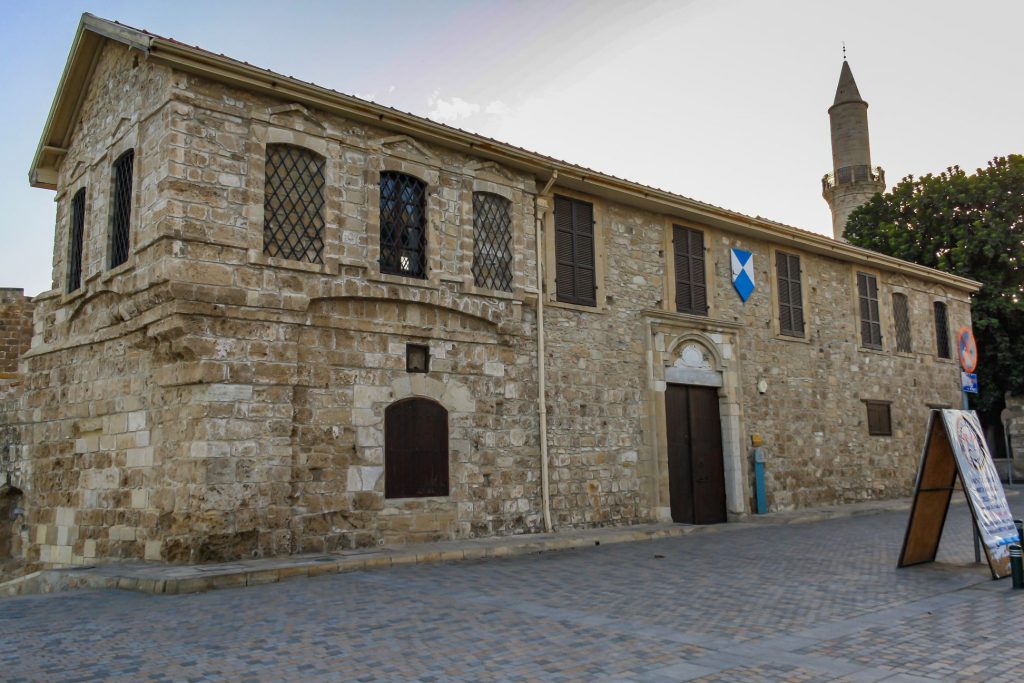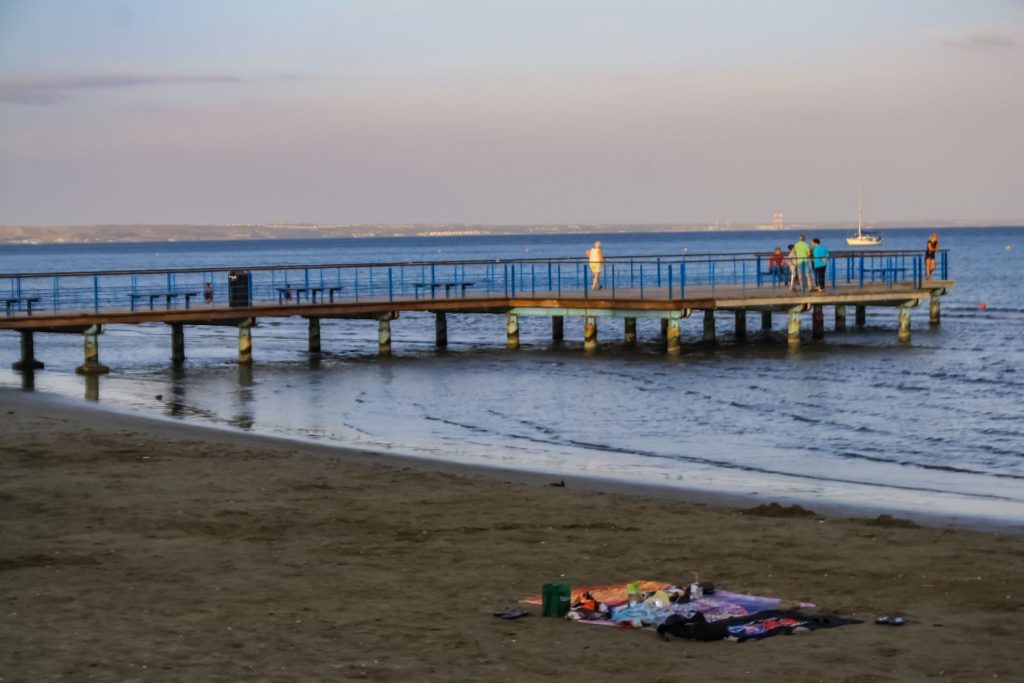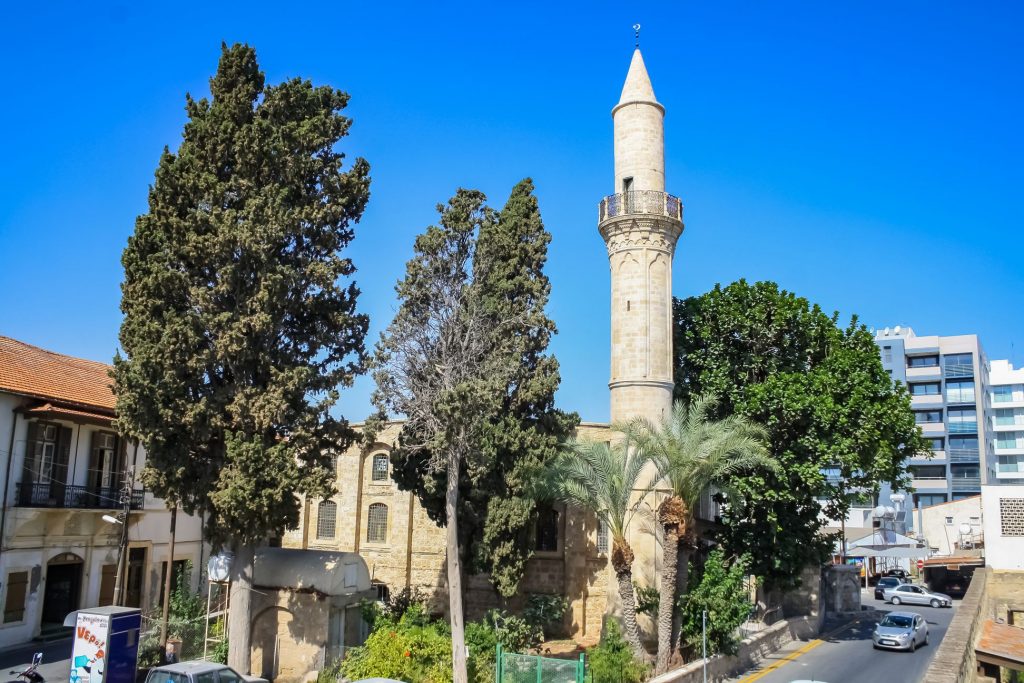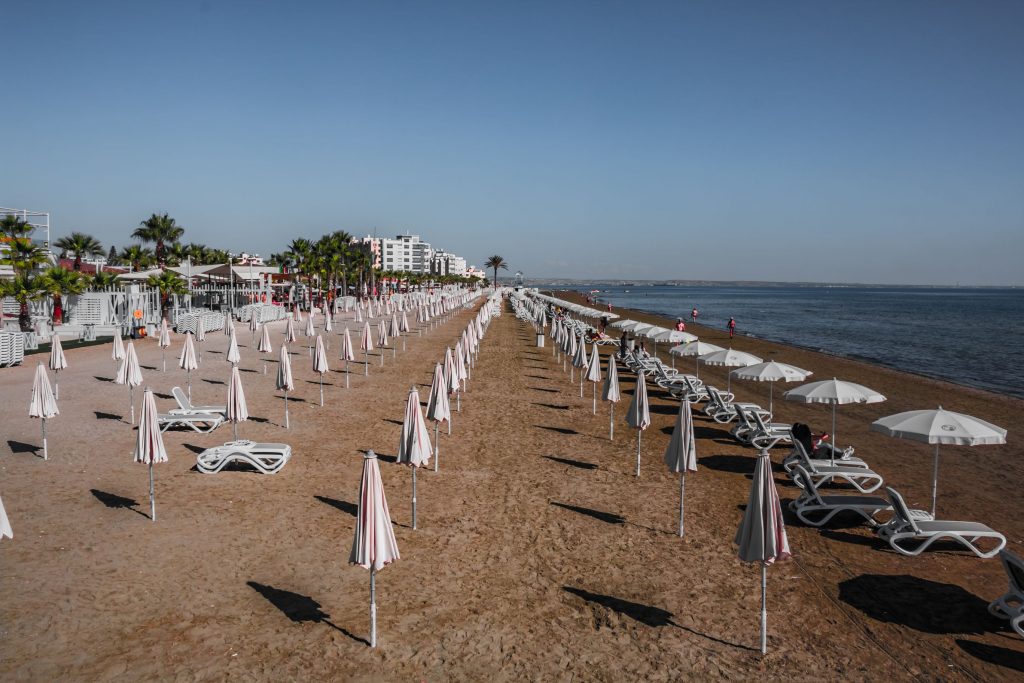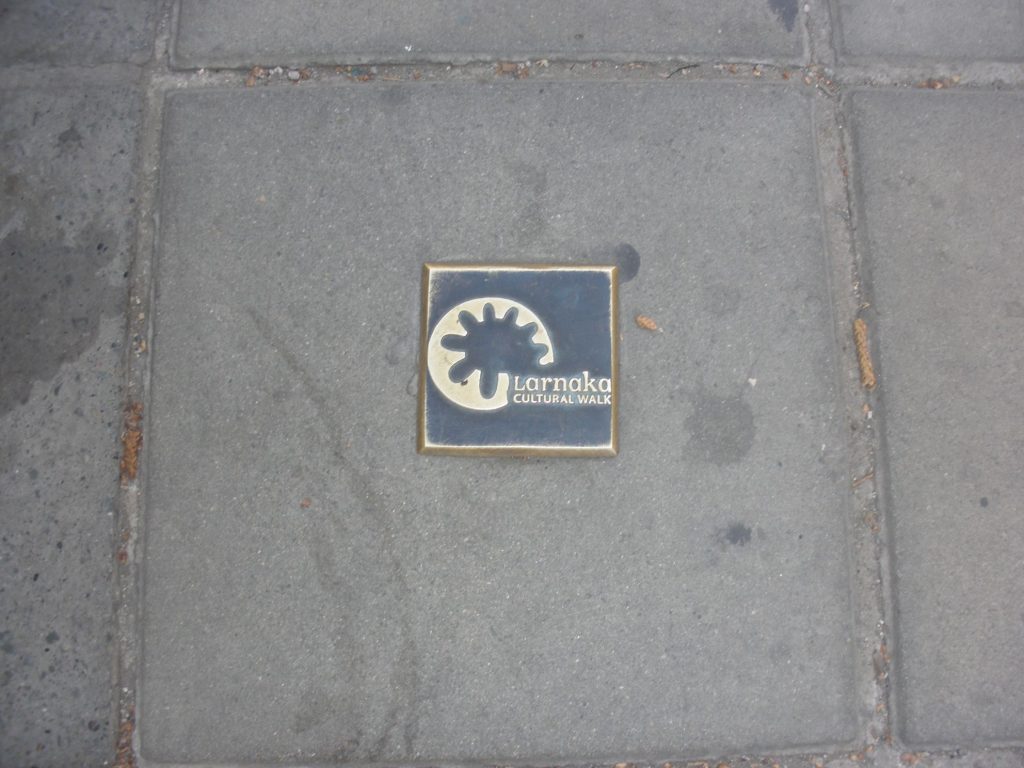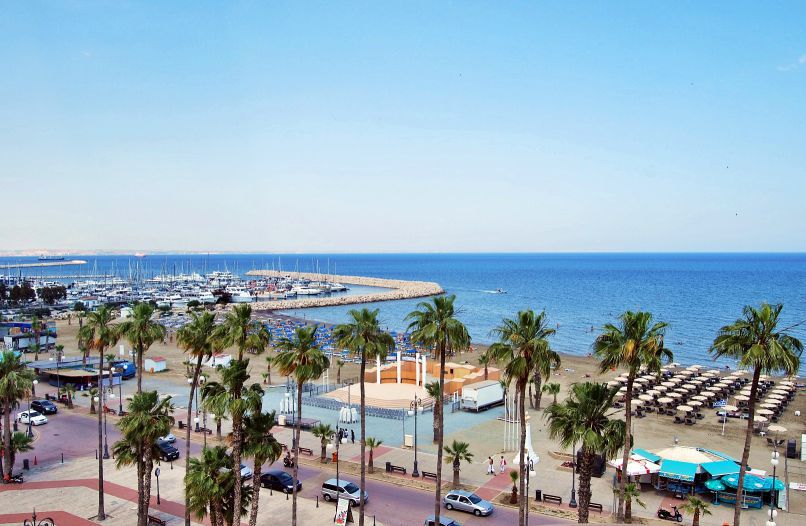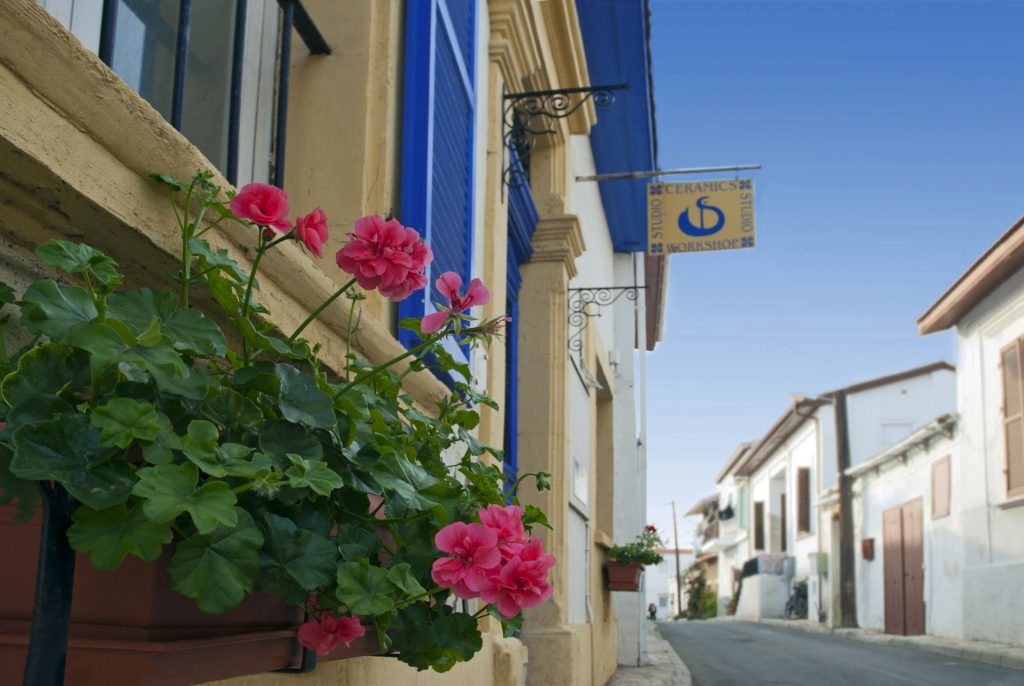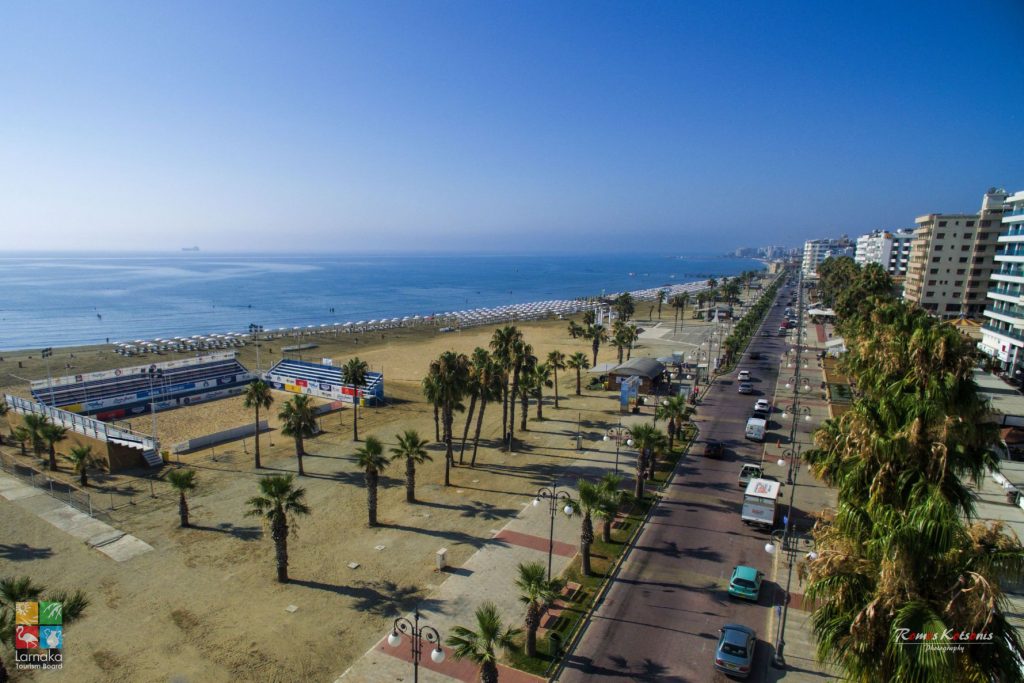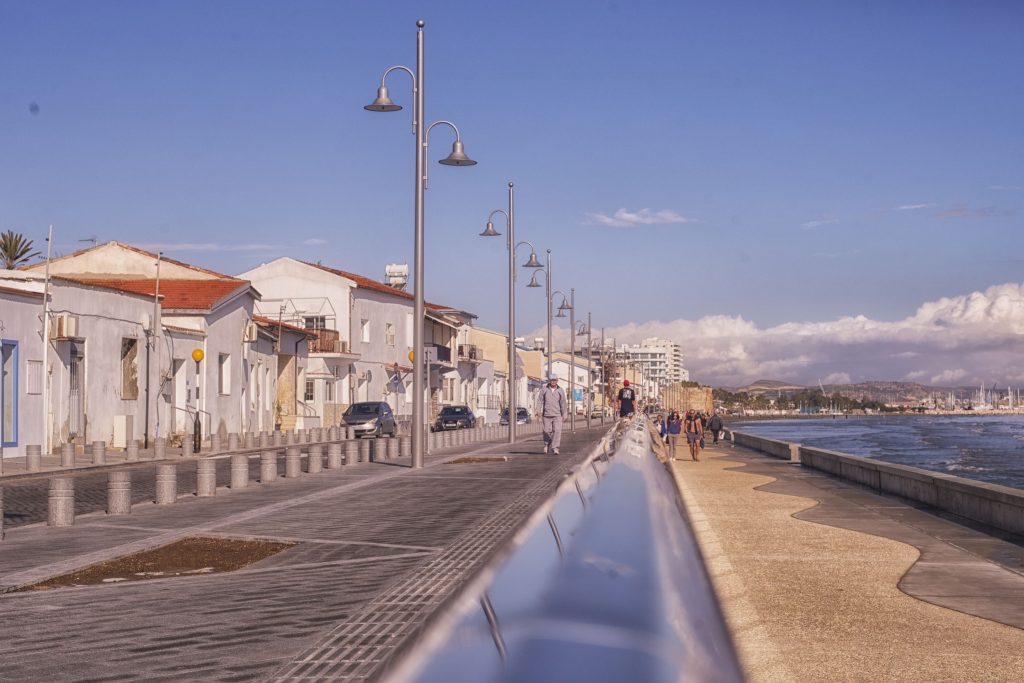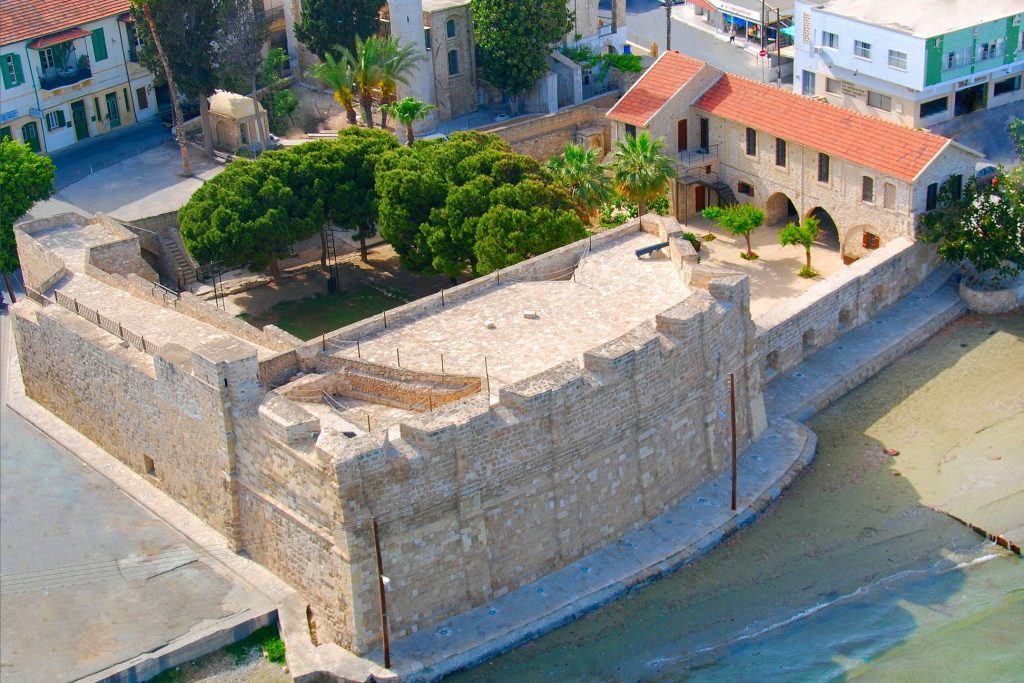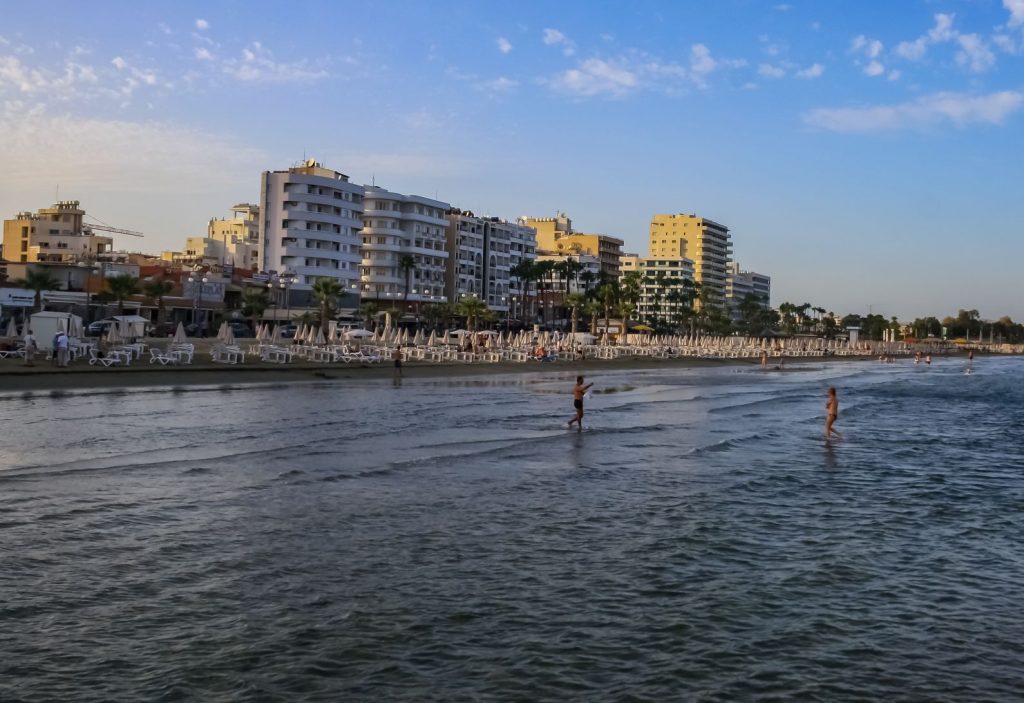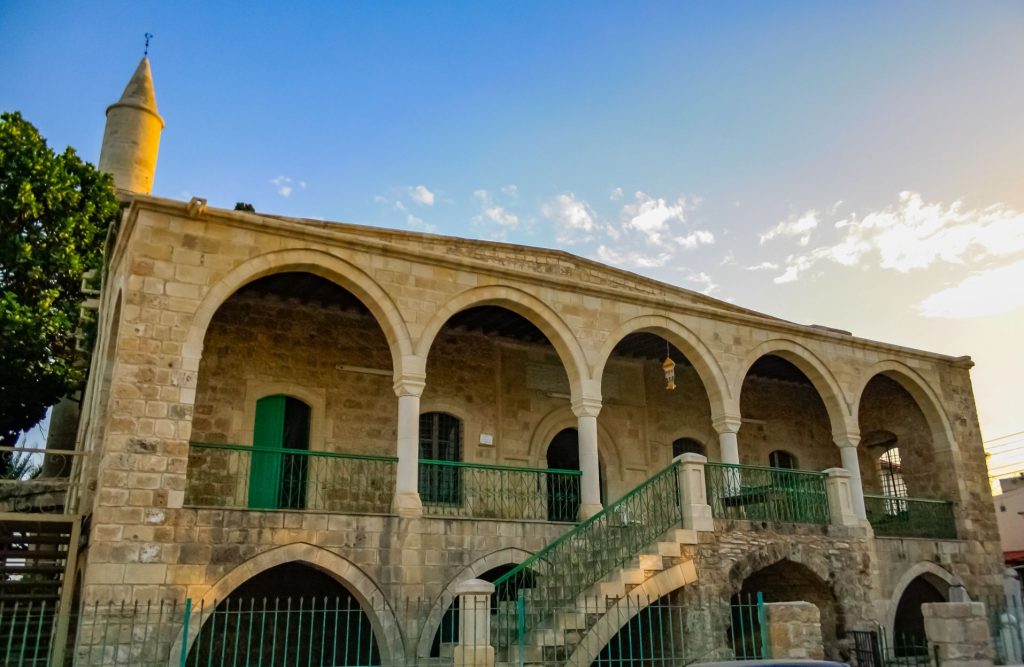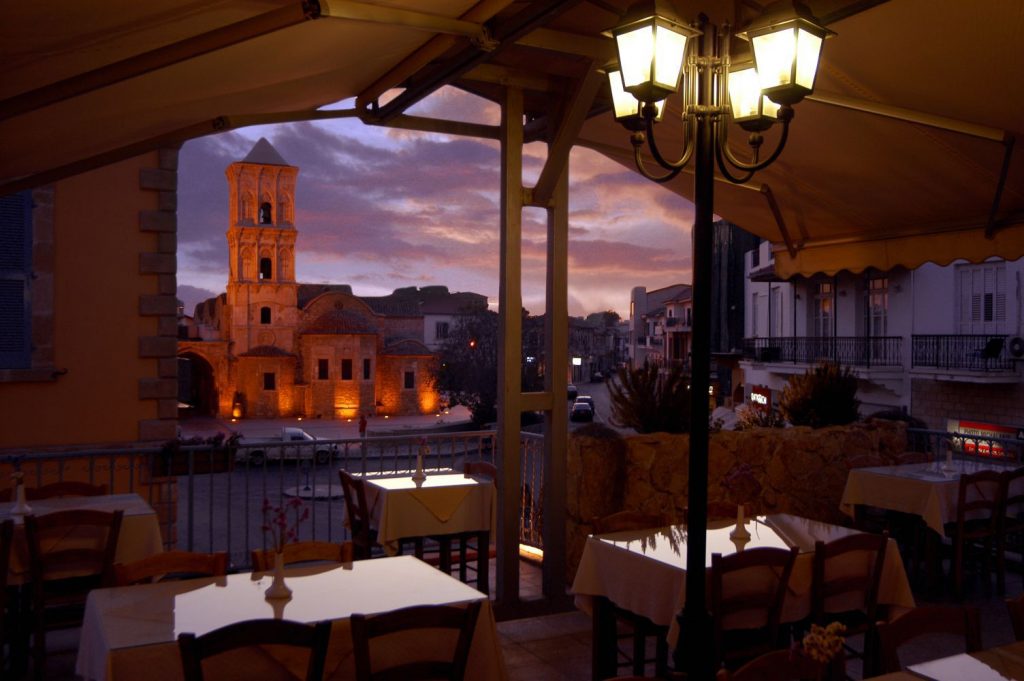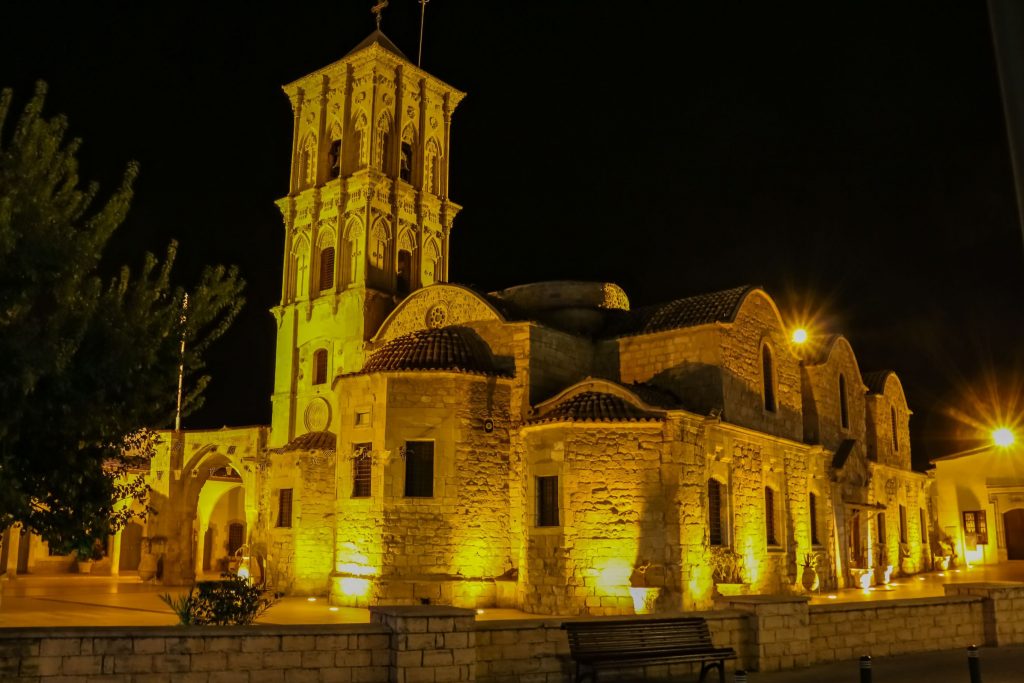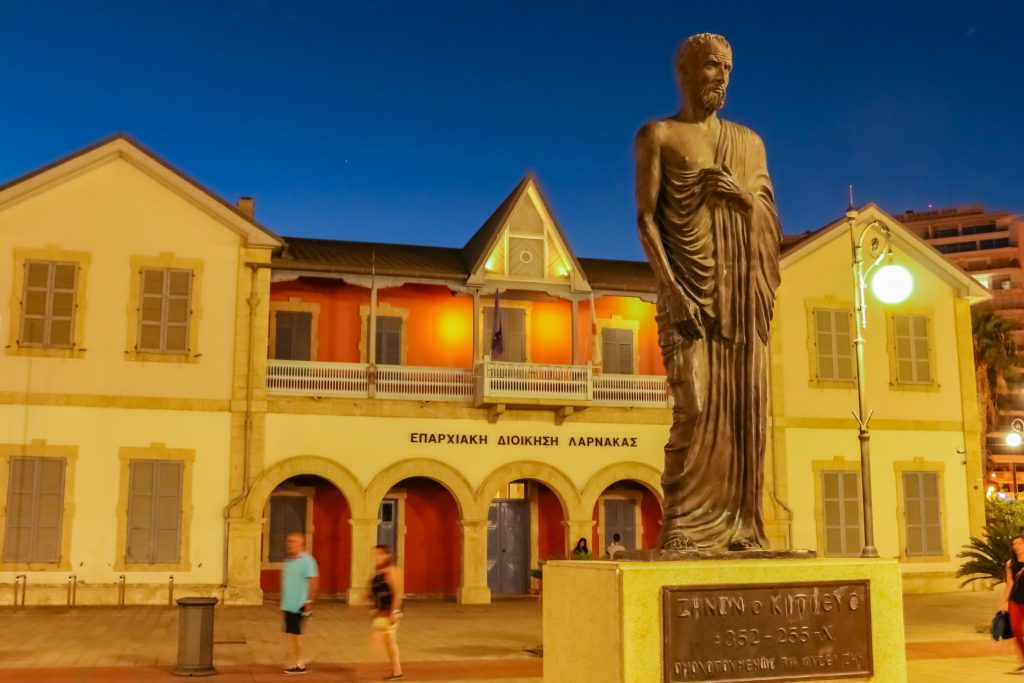Larnaca
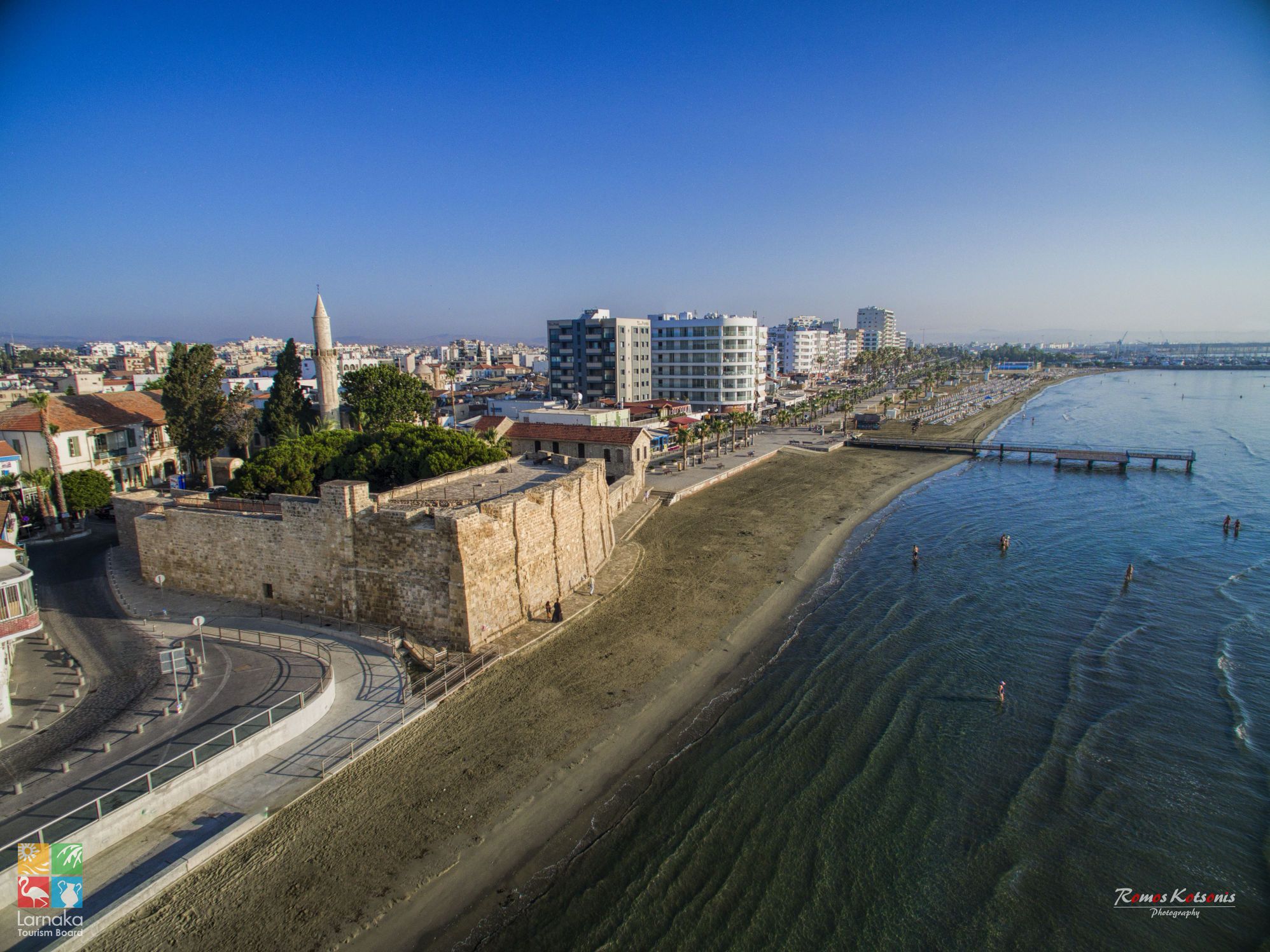
Larnaca is one of the major cities of Cyprus and the capital of the homonymous province, situated some 55 kilometers southeast of Nicosia, 73 kilometers northeast of Limassol and 137 kilometers east of Paphos. Nearby is the tourist Ayia Napa (about 67 km east) and Protaras (70 km) with plenty favourite beaches.
Being the main gateway to the island of Megalonisos, as it is home to Larnaca International Airport, the city is an ideal holiday destination, business trip or starting point to the other cities of Cyprus, with distances covered very quickly due to the excellent road network of the island.
Suitable for many walks and tours in its many narrow streets and in the diverse neighborhoods, as well as for cycling alongside the beach of Phinikoudes and Makenzy beach, Larnaca can cater to all tastes and has many points of interest, from museums, churches to tavernas, restaurants and bars.
The city is built in the depths of the homonymous bay, on the southeastern coast of Cyprus and its name derives from the ancient word “larnaca” meaning stone sarcophagus, as many sarcophagi were found in the area after the excavations in the ancient city of Kiti.
Today it is the third largest city on the island, after Nicosia and Limassol, with about 70,000 inhabitants and is a rising seaside resort that accounts for 20% of the total tourist traffic and is developing gradually after the Turkish invasion of 1974 and the closure of the international airport of Nicosia. Many new small and large hotel units with high quality services and competitive prices adorn the city, while the large market has many shops offering clothing, shoes and many more, as fits a large urban center.
The 4,000 years of Larnaca’s history and continued occupation have left the city a lot of monuments and attractions open to the visitor, while giving Larnaca a multicultural character, a mixture of Frankish, Venetian and Ottoman eras. The archaeological site of Kiti testifies to its centuries-long history with examples of 13th-century BC architecture. The Stoic philosopher, Zeno, is said to have started his stoic teaching after he lost everything in a shipwreck outside Larnaca, while Athenian general Kimonas died at sea in a naval battle with the Persians of Xerxes defending Kiti.
All this suggests that in ancient times Larnaca was a rich harbor and a major trading center for copper, as well as the salt harvested from Aliki in Larnaca. The salt flats, alykes, is a unique sight of nature and the first image seen from above as one approaches the airport in Larnaca. Today, it is considered one of the most important wetlands in Cyprus and it is protected by international programs (Ramsar and NATURA). The salt marshes attract the famous flamingos that overwinter here, painting in pink all the area and offering visitors a magnificent sight. On its western bank stands the famous mosque Hala Sultan Tekke, the 4th most important place of pilgrimage to the Muslims in the world, built in honor of Umar Haram, the aunt or adoptive mother of Muhammad.
Apart from being the successor of one of the kingdoms-cities of antiquity (ancient Kition) and an important Muslim pilgrimage, Larnaca is at the same time the seat of Christianity. Agios Lazaros of Larnaca, who is also the patron saint of the city, is the most important church and a great 10th- century monument. The church is located close to the center and the square of the same name. Here was the second house of the saint who, after his resurrection from Christ, came to Cyprus. Inside the imposing temple you can also visit his tomb.
The coastal front, the landmark of the city, apart from the enchanting beaches, and ideal for promenades and cycling in the city, is also the place in town where most of the activities and festivals take place, the largest being the Flood, which is celebrated in early summer or the Beach Volley World Championship for youth under 21 years old. The coastal front is located alongside the Great Avenue of Athens and is known as the local promenade, with its towering palm trees, given by many the name of Miami of the Mediterranean. Walking along the coastal road you can see the statue of Zeno, the bust of Kimon the Athenian and the lion of Venice.
Between Phinikoudes and Makenzy beaches, stands the Larnaca Castle, a 17th-century building and a defence project for the surveillance and protection of the southeast side of the island. Inside the castle there is the Larnaca Medieval Museum with rich photographic material on Byzantine art in Cyprus, a pottery exhibition from Byzantine, Medieval and Ottoman times, as well as metal utensils, firearms, helmets and swords. Behind it is the Bougouk Mosque, another attraction for the visitor. Other museums that adorn Larnaca include the Pieridis-Cultural Foundation of the Bank of
Cyprus, the Municipal Museum of Natural History of Larnaca, the Byzantine Museum of Saint Lazaros, the Larnaca Archaeological Museum and the original Kyriazi’s Medical Museum.
The old aqueduct, the Larnaca Kamares, is another important spot that is worth the attention of the visitor and was built in 1750 by Abu Bekir Pasha in order to deal with the problem of the drought that plagued the area. Lightened in the evening, the stone arches are a unique jewel, adorning the main street of Larnaca-Limassol.
Larnaca also has the second most important commercial port in Cyprus (after Limassol), a small marina for local boat owners and for the visitors of the city. With beautiful traditional buildings from all time periods, hidden corners, picturesque narrow alleys and very important cultural heritage, Larnaca is an ideal choice for holidays and wanderings.

